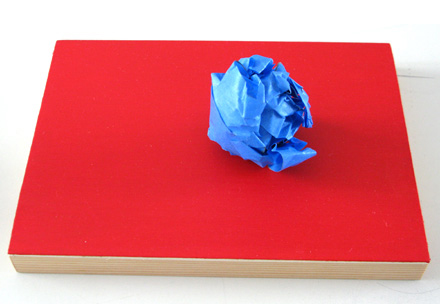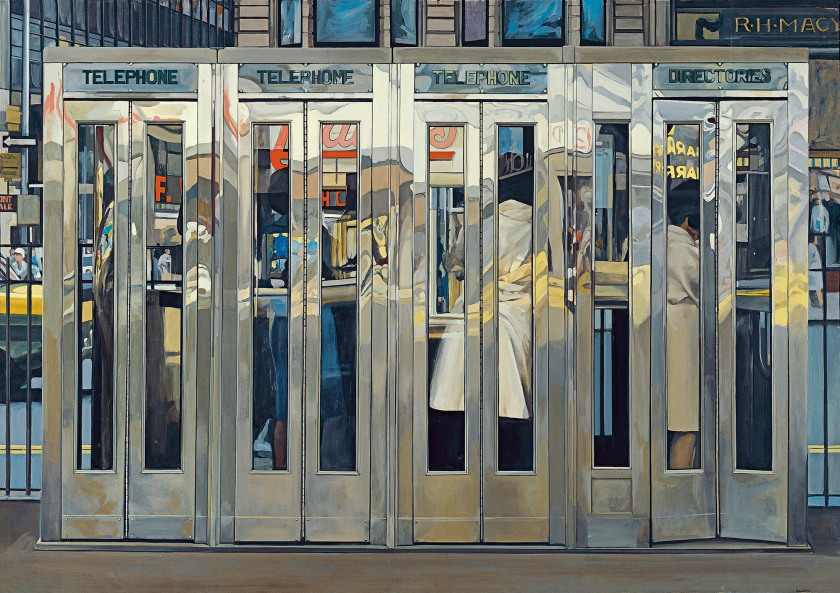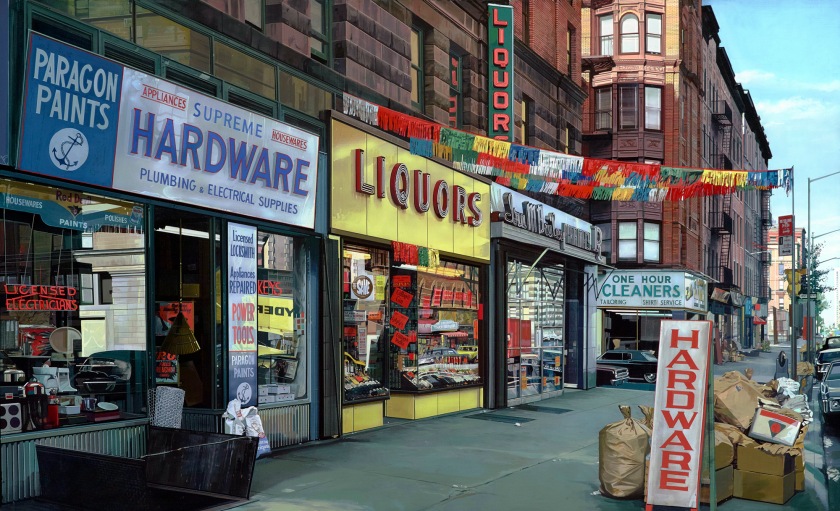Exhibition dates: 2nd April – 2nd May 2009
Opening: Thursday 2nd April 2009
Opening night crowd at Colour, Time by David Thomas with from right to left Farbenfreude Series: Movement of Colour, Heart (Large) 2008; Farbenfreude Series: Amid Dark and Light (Dark Painting) 2008; and Farbenfreude Series: A Gentle Pasing (Large) 2008 on back wall
Photo: Marcus Bunyan
“A photographed real space and an expanding undefinable painting space (the non-figurative form) confront each other. The result is a coexistence of various models of space, a coexistence and entanglement of inconsistent things.”
.
Christoph Dahlhausen. David Thomas EIKON nr 53, Vienna, Austria, 2006
A slow burn painting, photography and composites show at Nellie Castan Gallery. Minimalist grid paintings combine with squares of colour taken out of photographs (again! as at the recent Richard Grigg show at Block Projects). This supposedly imparts profundity to insubstantial and mundane photographs that aim to comment on the existential nature of our being through the presence / absence of the missing spatio-temporal slice. This exhibition just didn’t hit the spot for me. Nice to catch up with Jason Smith Director of Heide Museum of Modern Art who was in attendance.
Dr Marcus Bunyan
.
Many thankx to Nellie Castan Gallery for allowing me to publish the photographs in the posting. Please click on the photographs for a larger version of the image.
Opening night crowd at Colour, Time by David Thomas with the series Length of Time 2009 on table
Photo: Marcus Bunyan
David Thomas (Australian born Northern Ireland, b. 1951)
Length of Time Series: Blue tape on red monochrome
2009
Photo: Marcus Bunyan
David Thomas (Australian born Northern Ireland, b. 1951)
End of Summer: Homage a Tati (small splash)
Enamel on photograph
2009
Opening night crowd in front of David Thomas’ Black Reflection Painting: For William Barak 2009
Photo: Marcus Bunyan
Nellie Castan Gallery
This gallery closed in 2013.


















You must be logged in to post a comment.